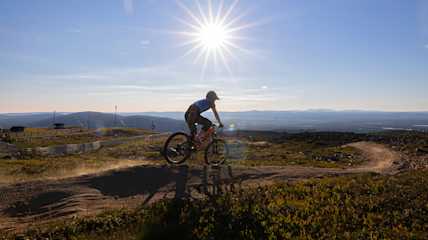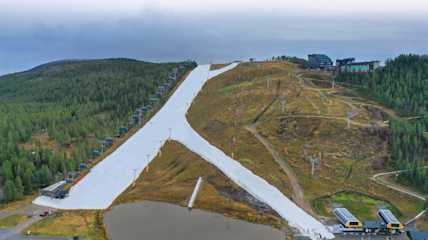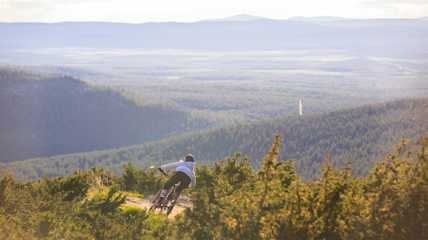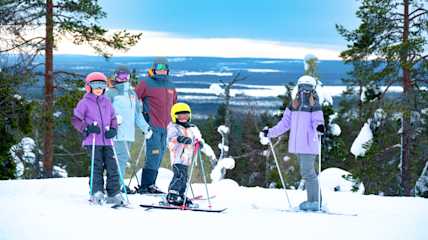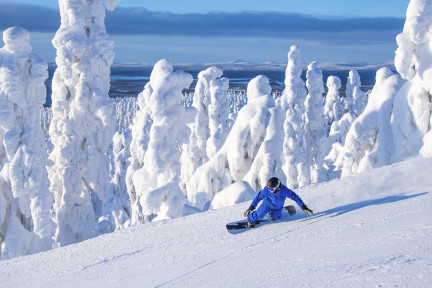
The snow changes, the pleasure remains: The seasonal cycle of Levi's slopes
What kind of snow conditions do you prefer to ski in? The ski season in Levi is long! Winter season starts in the beginning of October and only concludes in mid May. Over a seven-month ski season, various snow conditions are presented, changing according to the month and nature's offerings, which can shift daily.
Levi's 44 slopes are groomed by snowcats every night. However, snow conditions might change during the day for various reasons. If more snow falls during the day, the slopes might become bumpier. The spring sun, on the other hand, warms the snow, turning it into softer, wetter slush or sleet by the afternoon. Skiers have personal preferences for different types of snow. What's your favorite?
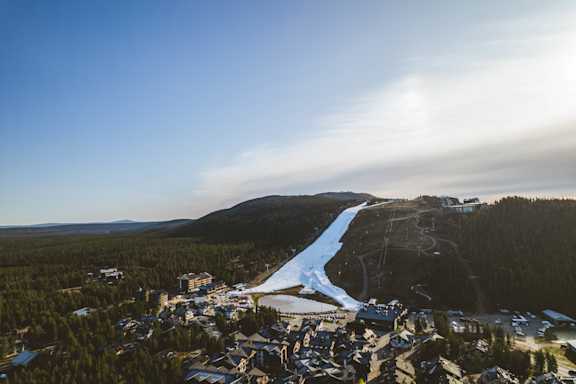
Levi's ski season begins with recycled snow, also known as stored snow
Stored snow is the snow collected from the previous winter, preserved over the summer, and spread on the slopes in the fall. This ensures adequate snow cover at the start of the season. Stored snow tends to be denser than fresh snow, providing a smooth and consistent surface for skiing. Skiing on it can feel like skiing on a dense, slightly icy base, in contrast to the powdery fresh snow.
Since stored snow is compact, it can melt and freeze again quickly, affecting the snow quality on the slopes, especially with fluctuating temperatures. Levi ski resort meticulously maintains the slopes, especially with stored snow.
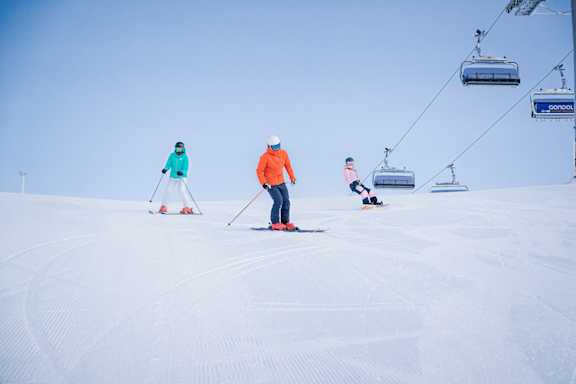
Corduroy slope base
Snowcats smooth out the slopes at night, removing irregularities and leaving behind a corduroy appearance. The snowcat compacts the snow, making it steadier and often faster when skiing. It also reduces the amount of snow that detaches under skis or snowboards, enhancing glide and speed. Corduroy slopes are available in the mornings and late mornings. They're especially popular among beginners, providing a consistent, easy-to-ski surface.
Depending on the season, the surface of the slope post-grooming can vary. This depends on air temperatures, which can differ significantly depending on where you are on the mountain, and the current state of the snow.
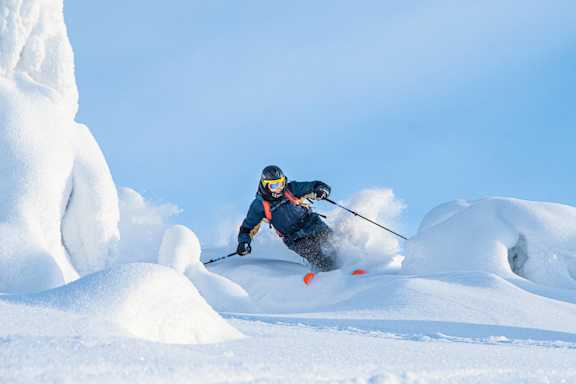
Floating pleasure on the slope
Powder snow is light, dry, and finely grained snow that forms when the air temperature is particularly low. Since air moisture doesn't condense into large snowflakes in cold conditions, powder consists of small, lightweight flakes. Powder snow is typically not compact or heavy, and it billows into the air upon contact.
For skiers and snowboarders, skiing in powder offers immense pleasure. Skiing in powder often gives the sensation of floating or gliding on soft snow, a different experience from skiing on hard or slushy snow. As powder is light, it can accumulate into drifts during the day, making skiing challenging for beginners. For experienced skiers, deep powder can provide opportunities for broad turns and tricks. It's recommended to use wider skis or snowboards when skiing in powder, ensuring better float on deep snow. Many skiers and snowboarders regard skiing in powder as one of the best winter sports experiences because it offers a unique sensation and the opportunity to enjoy soft, untouched snow.
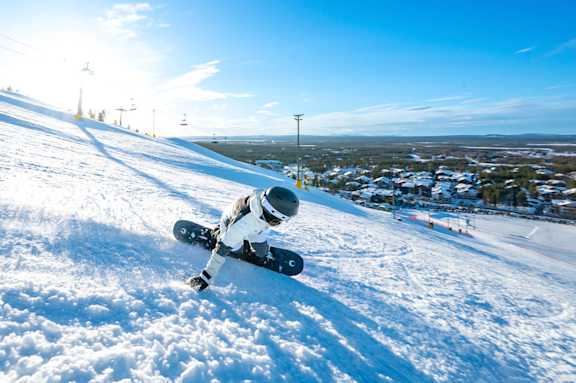
Spring's various snow conditions and their impact on skiing
Spring skiing, from March to May, lets you experience at least three different forms of snow. Slush, corn snow, and wet snow - differ both in their formation process and their physical properties. These differences also affect skiing conditions. Both wet snow and slush are damp snow conditions, but they have distinct characteristics.

Slush snow
Slush is generally looser and more liquid than wet snow. It forms when temperatures rise close to or above freezing, or when rain falls on the snow. Slush is like melting, wet snow, and tends to flow or move more easily than wet snow.
Skiing in slush is different from skiing in dry or powdery snow. The slush provides a softer skiing experience compared to, say, an icy surface. Because slush is wet, it can cause the base of skis or snowboards to stick to the snow, especially if the equipment isn't properly waxed. Good waxing can help reduce this sticking and enhance the skiing experience.
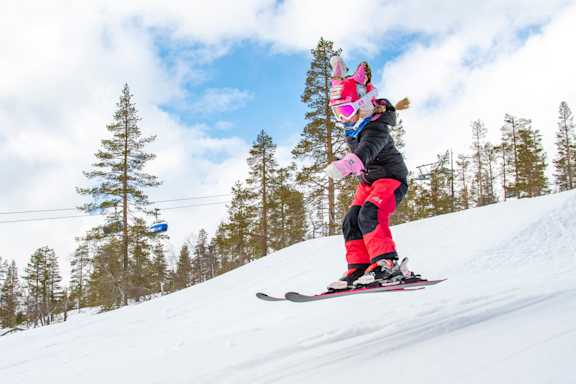
Wet snow
When the temperature hovers near freezing and the fallen snow begins to melt, it turns into wet snow. Wet snow is a mix of snow and water, slightly denser and grainier than slush, reminiscent of sorbet or crushed ice, and can be slippery. During the day, the snow on the slope can also transform fresh snow into wet snow. Skiing on wet snow might be challenging but not as heavy as in slush. It can also offer a softer and more pleasant skiing experience than the hard corn snow.
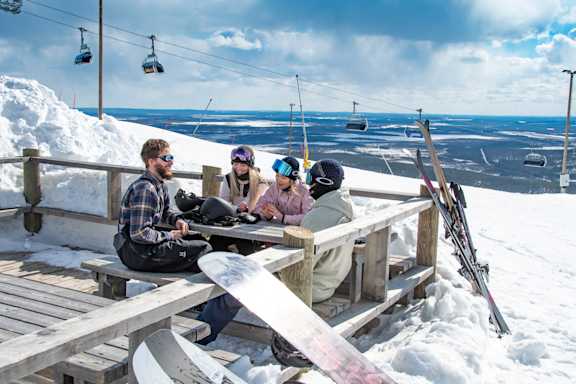
Corn snow
Corn snow forms when slush or other snow melts and freezes over several cycles. This repeated melting and freezing result in layers of small ice crystals. Corn is older and denser snow. Skiing on corn snow can be fast and smooth since the snow is compact and hard. Springtime corn slopes are a favorite among many skiers since skiing on corn is fast, but the turns are soft. Not as soft as in wet snow, though.
The skiability of all snow types also depends on the skier's skill level, the type of skis or snowboard, waxing, the slope's gradient, and other conditions.
